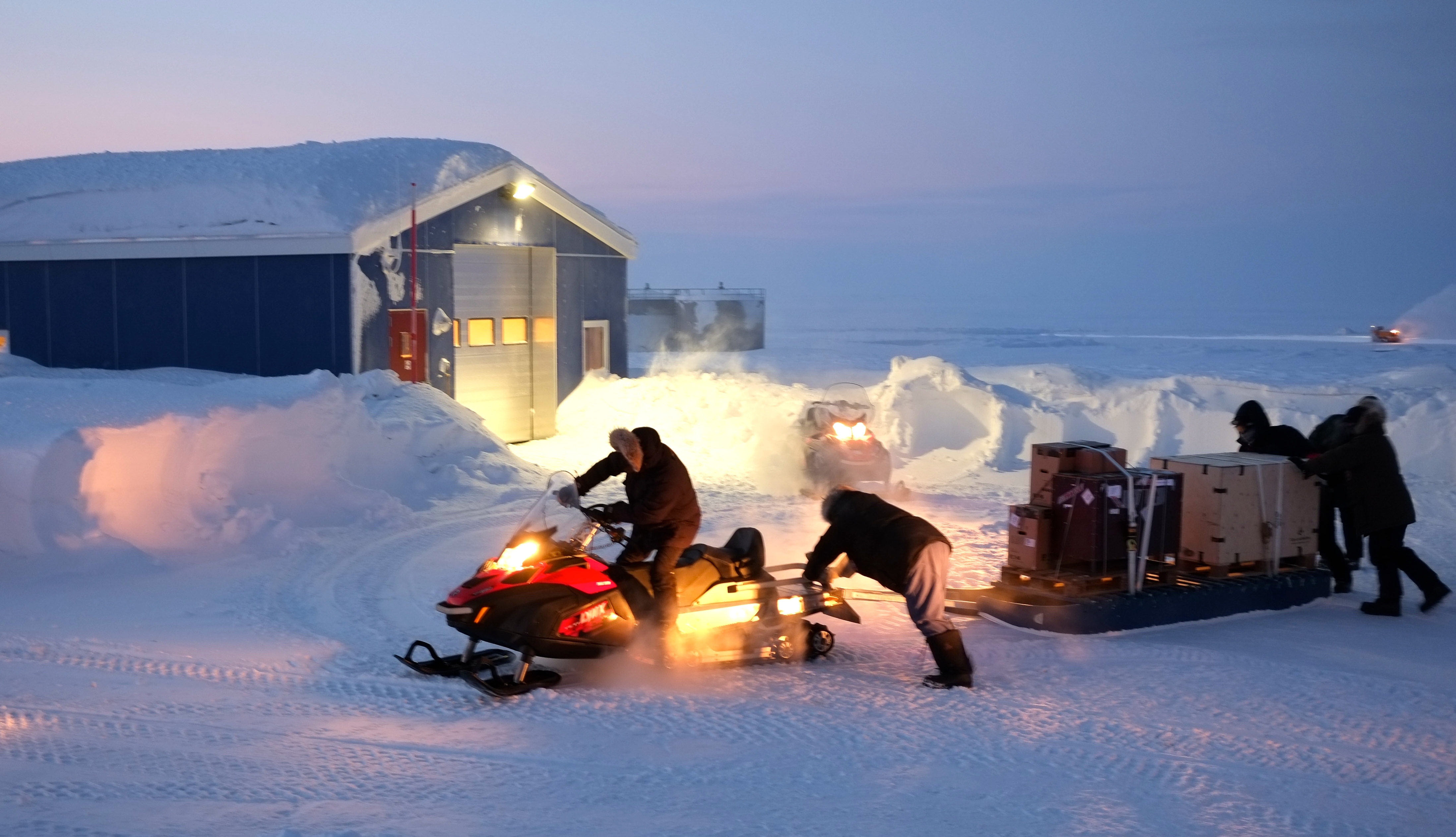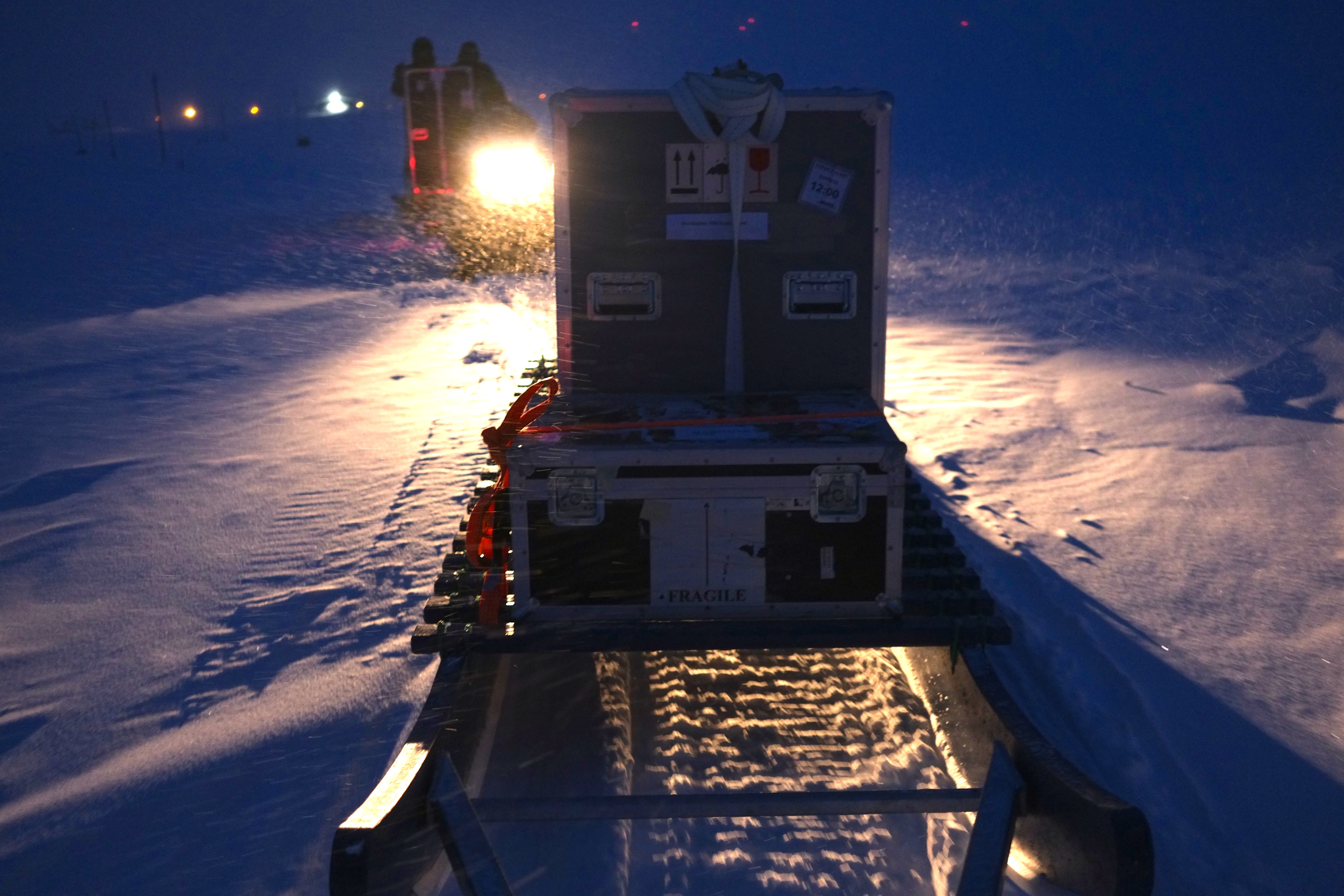On field campaign with a new state-of-the-art instrument
Account of a field trip by Ingeborg Elbæk Nielsen - PhD Student at Department of Environmental Science, AU


The Department of Environmental Science at Aarhus University has acquired an advanced instrument: a Soot Particle Aerosol Mass Spectrometer (SP-AMS), meant to be used during field campaigns at Villum Research Station (VRS). Ingeborg Elbæk Nielsen - PhD Student at the Department – gives an account of the instrument’s first journey at Villum Research Station during a campaign in spring 2015.
In the year that has passed since we received our new state-of-the-art SP-AMS, we have collected a great amount of data almost ready to publish, from both laboratory experiments and field campaigns. The SP-AMS can measure the chemical composition of ambient aerosols with a high time resolution, and one of the main purposes for our new instrument is to measure the composition of small aerosols with a size up to 1 µm at VRS. The instrument was first brought to Villum Research Station for a field campaign in the spring 2015. A lot of work goes into planning a field campaign in the high Arctic and even though you thought you planned everything, always something does not go as planned.
We were off to a good start and the instruments, as well as the scientists, arrived at VRS only one day delayed. However, it did not take long before we encountered our first big problem: it was not possible to clear the road to the measurement hut, which is located 2.5 km away from the main station. To make it clear we are not just talking about small amounts of snow that you move with a shovel - we are talking meters of snow! This meant that it would not be possible to drive the SP-AMS to the measurement hut as we had originally planned. We simply had to come up with a new idea - quickly.
The SP-AMS is not only a delicate and sensitive instrument but also a quite big instrument that (with its transportation box) weighs almost 300 kg. Obviously, this complicates things since it is not possible to just pick it up and carry it 2.5 km in deep snow with an air temperature around -35 degrees. After discussing it back and forth we decided to connect a sledge to a snow mobile and transport all of our equipment to the hut. After two days of driving back and forth with the sledge loaded with less expensive and fragile instruments we had finally created a clear track to the hut, and it was now time to move the SP-AMS. Two men were running on each side of the sledge with the big SP-AMS box in order to be able to prevent the instrument from tilting. It was a long drive in the darkness, cold air and deep snow, but we finally reached the hut without damaging the SP-AMS. We got it running after a couple of days and luckily, we didn't encounter other huge problems beside the usual power failures and skidoo break downs, which you will almost always experience during an Arctic field campaign.
As a good fairy tale this campaign also had a happy ending, and I am now the very pleased owner of a three-month long Arctic SP-AMS data set.
Ingeborg Elbæk Nielsen, PhD Student